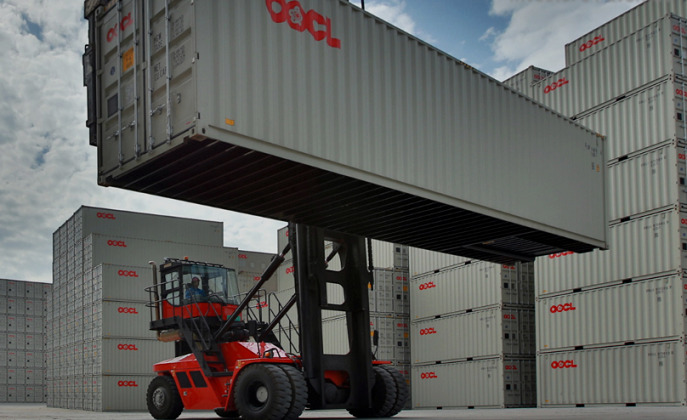
-
The Container Availability Index January readings show greater congestion at ports in China than in the same month over the last three years, indicating more boxes are available in China
-
Operators expect a post-Lunar New Year demand revival and average one-way leasing pick-up rates for second-hand containers to increase by up to 40% on China-Europe and China-US trade lanes
Container data in January lift demand revival hopes among traders and operators as China’s reopening after three years of zero-COVID policy, an early Lunar New Year and outbreaks of infections kept the overall market bearish, according to global container trading and leasing data from Container xChange.
The Hamburg-based online container logistics platform said in its February Global Market Forecaster update that its Container Availability Index (CAx) in January indicated more boxes had become available in China, as evidenced by the growing congestion in Chinese ports.
Early indicators show container operators expecting a demand bounceback – as the pick-up charges from China to Europe Mediterranean for 40-foot high cube containers have increased by 9.7% from $513 in week 1 to $563 in week 5, Container xChange said.
Similarly, average prices for 40-ft HC containers rose from $3,662 in week 1 in China, and gained 3.6% to $3,794 in week 5. Though the increase is not significant, the fact that the downward trajectory has reversed is a good sign for many in the industry.
RELATED READ: Container availability improving at Asian ports
“As we progress into the new year, according to the latest CAx data, container prices in China are showing signs of stabilization – though still elevated than the 2020 peak of shipping and demand boom,” the report said.
Another key development is the increased availability of containers in China, said Container xChange, which noted the CAx readings remained elevated compared with January of the last three years across the ports of Shanghai, Ningbo, Tianjin and others.
This indicates more inbound containers and few outbound containers, which corroborates the current situation of factory closures and labor shortage in China because of the infections.
The CAx measures the ratio of inbound to outbound containers port-wise – and a reading above 0.5 suggests more inbound than outbound containers in Chinese ports, the report said.
RELATED READ: Where are all the containers?
Container xChange explained that the rise in inbound containers at this time of the year is usually due to the post-peak season repositioning of containers back to China to balance out stock.
“The strategy of repositioning containers back to Asia after the peak season gains strength from the clearance strategy in the US and Europe. This effectively takes the capacity out of the market, and we see that this has been top priority this year for carriers,” comments Christian Roeloffs, co-founder and chief executive of Container xChange.
The situation further helps stabilize prices, which is the need of the hour in the current situation of supply chains globally, said Roeloffs.
“The rebound of trade in China and, concomitantly, the container trade rebound, will depend on the pace of its reopening, that is, how quickly do production volumes return to normal there. It is going to be interesting to see what happens when inventory stock levels in importing countries have been rebalanced and there is a need to reorder,” Roeloffs said.
“Effectively, the question is whether importers are still wary of supply chain disruptions that will influence them to buy early or will they return to the ‘just-in-time’ model. In any case, we do expect to see a demand uptick – also because recent GDP figures make a recession in Europe less likely.
“However, because demand has really plummeted a lot, we will not see it recovering to pre-COVID levels or even to ‘during COVID’ levels too quickly.”
China’s manufacturing PMI (purchasing managers’ index) came in at 50.1 in January, up from 47 in December.




